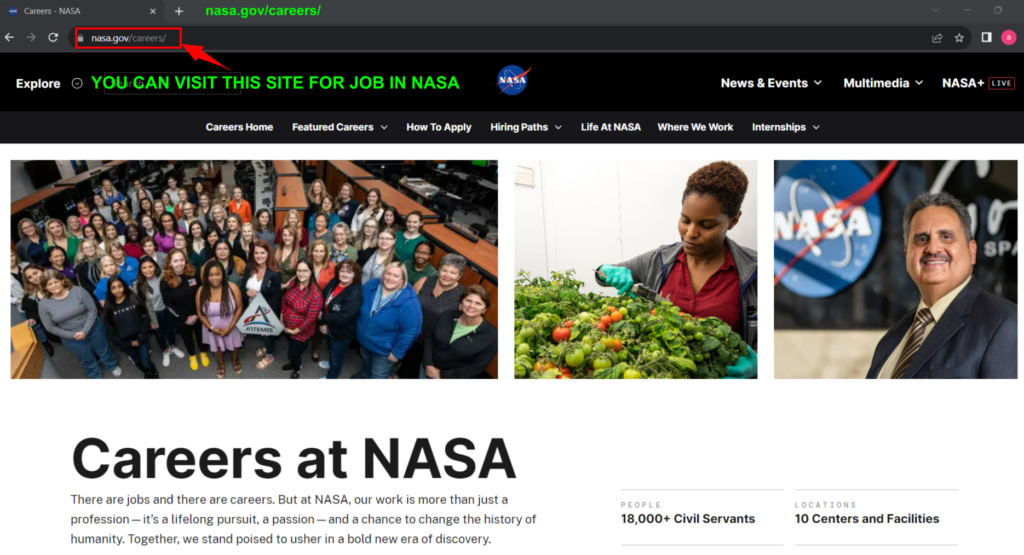Table of Contents
What exactly is NASA, and what does it do?
As mankind sets its sights on the skies, the issue of what languages will code the next great leap emerges. While warp drives and teleportation are still science fiction, the programming languages that will power the next generation of space travel are not.
In these developments, NASA (National Aeronautics and Space Administration) relies heavily on sophisticated engineering and programming languages to take humanity into space. As we approach 2024, software development for space missions is more important than ever.
NASA, which is at the leading edge of those advances, is predicated closely on present-day generation and programming languages to take humanity to the area. As we technique 2024, software program development for area missions is more essential than ever.
Here are 10 languages to rocket your career into orbit, whether you’re a seasoned developer or a wide-eyed novice.
1. Python: Python remains a programming language within the realm of NASA. Renowned, for its ease of understanding and adaptability Python is highly favored for tasks such as analysis, device identification, and clinical statistics. NASA relies on it for managing facilities, processing data, and conducting simulations due, to its library support and seamless integration capabilities.
2. C++: When it comes to power and effectiveness C++ is unmatched.This established programming language remains a factor, in powering high-performance applications making it essential, for spacecraft software, satellite communication, and critical systems.
3. Java: Javas’ philosophy of “coding and jogging on any platform” makes it a tremendous desire, for packages that may run seamlessly across all structures. NASA relies on Java for activities related to satellite TV for PC communications. It is also commonly utilized in an agency to broaden macro management structures and software. This flexible programming language guarantees that applications are compatible, with each other.
4. JavaScript: In times the utilization of JavaScript has extended beyond its role, in web development. NASA has increasingly incorporated JavaScript into aspects, such as creating user interfaces and interactive applications. Additionally, with the advent of Electron, a desktop application framework JavaScript has found its place in software applications for tasks, like data analysis and spacecraft system control.
5. Fortran: Even though Fortran is one of the programming languages it still holds its value in the aerospace industry for scientific and numerical calculations. NASA depends on the programming language Fortran to perform tasks such, as mechanics and complex simulations of physical events. Due to its efficiency, in handling computations it is widely favored for applications.
6. MATLAB: Gone are the days when supercomputers were only meant for math enthusiasts. MATLAB, with its user interface and wide range of tools, is now a choice, for NASA engineers and scientists. Whether it’s designing algorithms, examining data, or handling signals MATLAB has got you covered (and your rockets too).
7. Swift: Swift, developed by Apple is no longer limited to iPhones. Its impressive speed, user nature, and increasing popularity, in the field of aerospace, have caught the attention of NASA. They are utilizing Swift for creating applications for iPads and iPhones assisting in tasks, like planning, communication, and data visualization.
8. Go: This new arrival is swiftly gaining popularity because of how easy it is to use and its efficiency. Go excels, in creating systems that can handle tasks simultaneously and scale effectively which makes it a perfect fit for NASA requirements, in distributed computing.
9. Rust: The space exploration network has proven a hobby, in Rust because of its cognizance of safety and performance. Rust is specifically appropriate for designing structures that require dependability thank you, to its robust reminiscence protection features.
10. LabVIEW: LabVIEW, at the same time as no longer categorized as a programming language is extensively applied within the aerospace field as a programming surroundings. It allows engineers and scientists to assemble structures and function hardware through a personal interface. NASA relies on LabVIEW for obligations such, as trying out, records collection and designing manipulated structures.
How you can apply for NASA Internship and NASA Jobs?
Here you go –
Step – 01
For NASA Internship!

Site – https://www.nasa.gov/learning-resources/internship-programs/
- Go to the above site and apply for the NASA Internship you looking for.
Step – 02
For NASA Jobs!

Site – nasa.gov/careers/
- Go to the above site and apply for the Jobs you looking for.
Some General Requirements For Job
- Education: For a Job at Space a bachelor’s degree in a relevant field such as science, technology, engineering, or mathematics is typically required. Some positions may require a master’s degree or doctorate.
- Experience: If you have experience in a field that is required for the job or you completed Internships, Research Experience, or Previous Employment Experience. You have a high chance to get in there.
- Skills: Strong skills in your field are also essential and take you through that. This could include technical skills, such as programming or engineering, or soft skills, such as communication and teamwork. These skills can help you to get there.
- US citizenship: US citizenship is required for NASA jobs. However, there are a few exceptions for non-citizens who have the necessary skills and experience.
Keep in mind that the suitable language, for you depends on your abilities and role. However, by mastering these ten languages you’ll be on the path to shaping the future of space exploration. So dust off your keyboard and choose your tools wisely. Get ready to embark on a career, in space!
Good Luck and make your dream come true!👍
Thanks for reading our blog if you like it you can also check this –
- The Future of Technology: Unveiling the 10 Paying Tech Jobs for 2024
- Debugging Like a Pro 101: Strategies for Python Developers
- Web Scraping 101: A Beginner’s Guide to Python Scraping
- Best Chat GPT Alternative: 10 Free Alternatives to ChatGPT for Seamless Conversations
- Crush Your Coding Goals with These Must-Have VS Code Extensions for Developers
